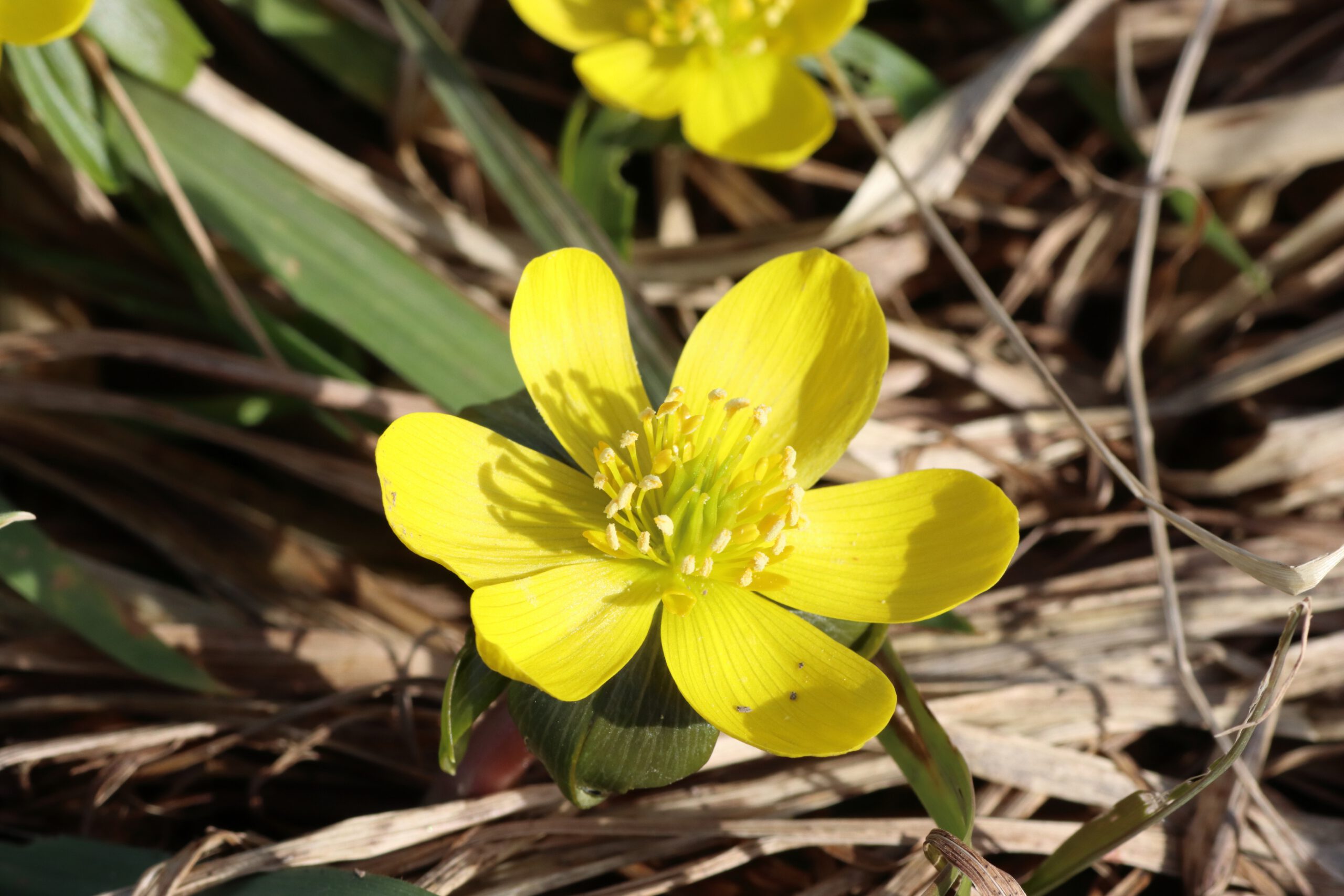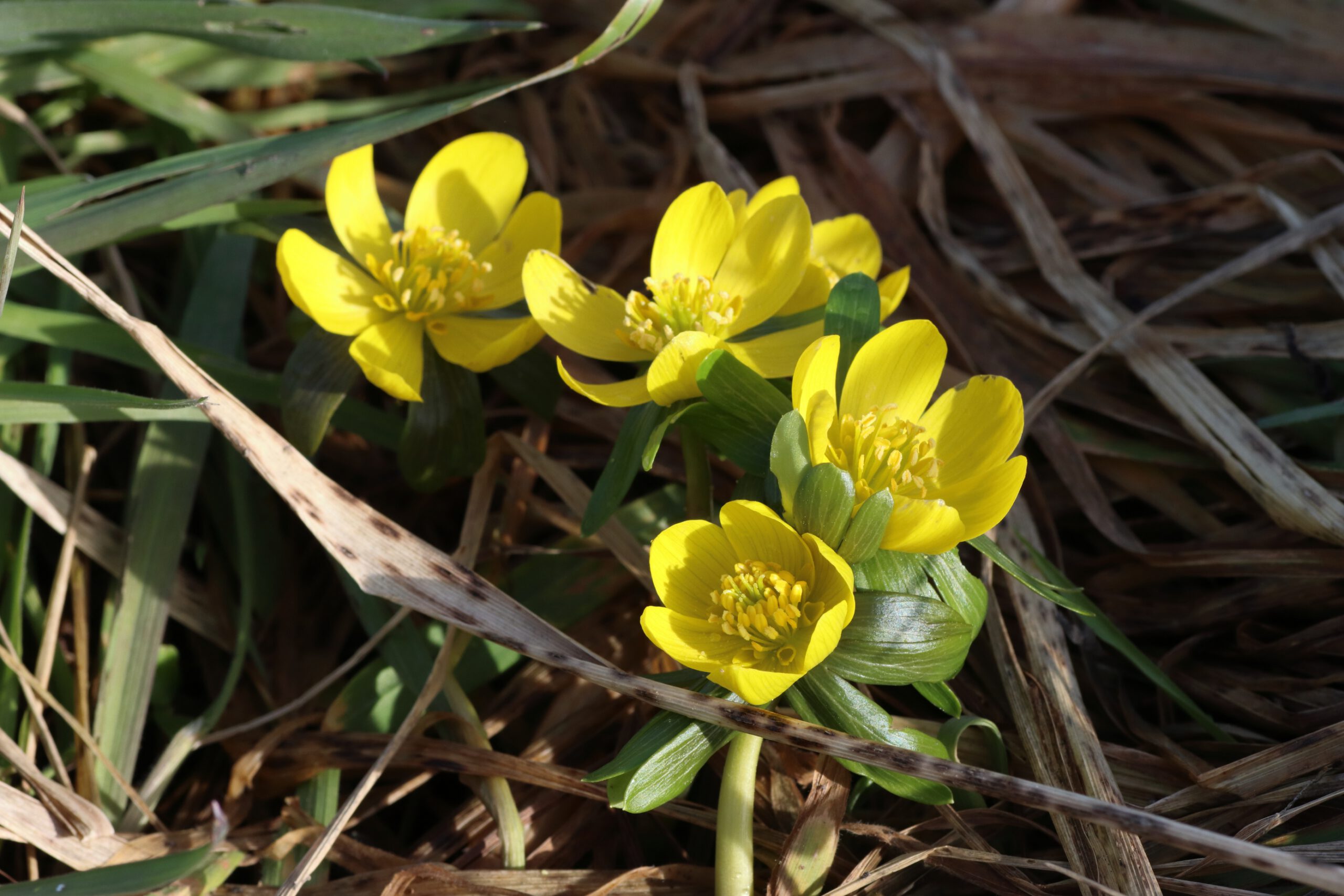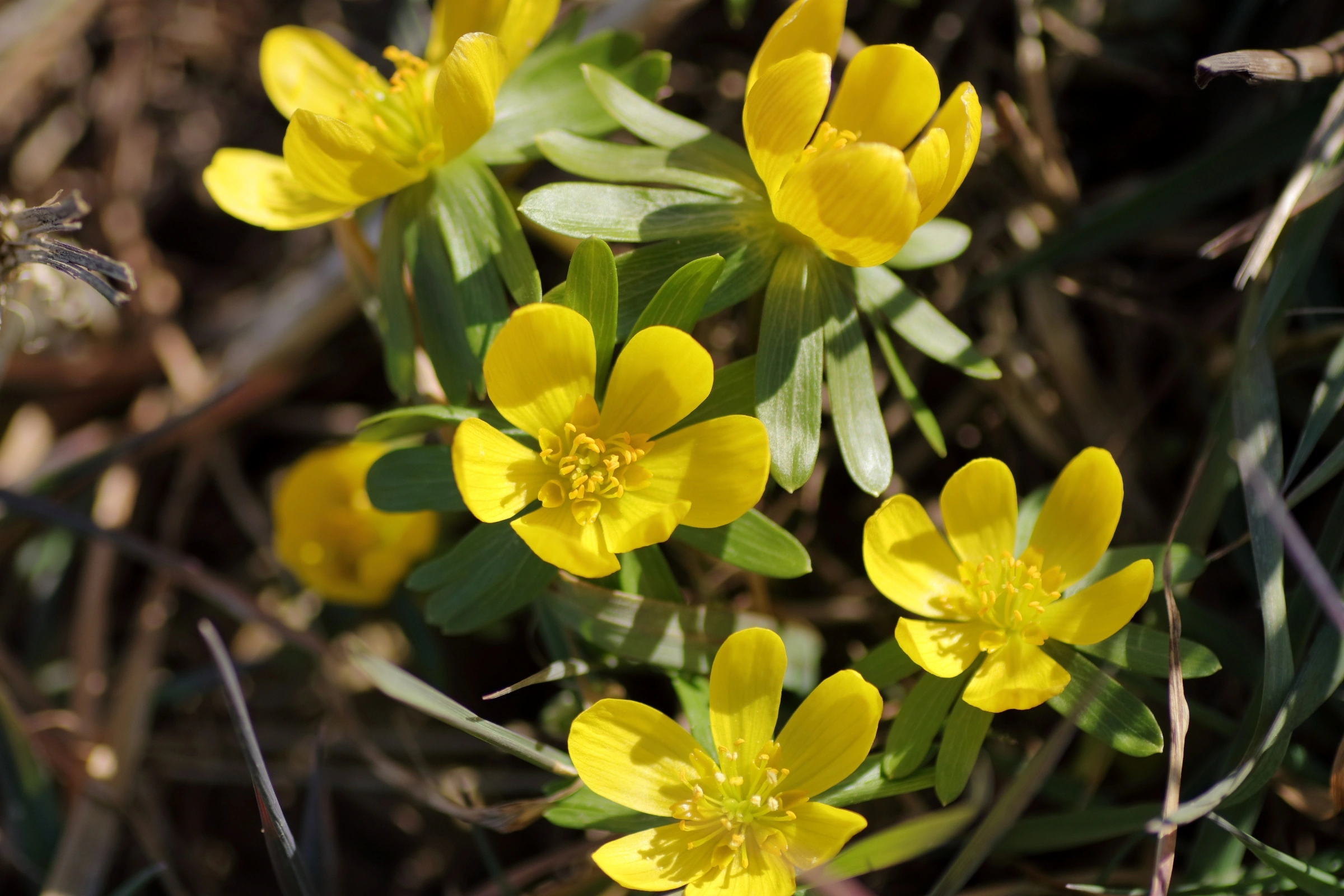The “winter aconite” (Eranthis hyemalis) is one of the first plant to appear in spring. Furthermore, this is a popular used ranunculus in the garden.






~ Poisonous plant ~
Occurrence and distribution: The winter aconite occurs naturally in moist leaf forests in south-eastern France, Italy, Hungary and Bulgaria (as well as other south-eastern Europe). In Central Europe it is used as an decorative plant in gardens and parks. However, it occasionally grows wild in meadows and vineyards. The largest natural occurrence in Central Europe is probably in the Rautal valley near Jena (it is also known as the valley of the winter aconite). In other areas, however, winter aconite are considered a neophyte (naturalised plant). As early as the 16th / 17th century, winegrowers brought the plants to Germany from the Mediterranean region. The plant prefers a nutrient-rich, loose loamy soil with partial shade.
Plant description
Growth habit: The first leaves of the winter aconite are formed in early spring. The plant consists of a green (rarely slightly red) stalk with a single flower on this stalk. It reaches a height of 5 cm to 25 cm. At the top of the stalks, the leaves form under the blossoms. It is a perennial plant.
Bulb: The plant has an underground bulb. These serve the winter aconites as hibernation organs in which they store nutrients.
Leaves: Three hand-shape divided leaves form on each stem. These are attached in whorls. The leaves have a green colour and are slightly bent downwards.
Blossoms: The winter aconites have 5 – 6 (rarely more / up to 10) golden yellow petals per blossom. The hermaphrodite blossoms sit individually on the stalk. They have a diameter of up to 2.5 cm. The entire blossom is radially symmetrical. The stamens and yellow-green coloured stigma develop in the middle of the flower. Between the petals and stamens sit the funnel-shaped, two-lipped yellow-coloured nectaries. They can reach a size of up to 6 mm. The nectar of the blossoms is gathered in these. The nectar leaves and stamens give off a light fragrance. Flowering periods last from january to march. They open in the sunshine and when temperatures are not too low. The opening and closing of the flowers depends on the ambient temperatures.
Seeds: After blooming, four to eight multi-seeded fruits form in each flower. These contain the seeds. When ripe, the fruits open and release the seeds. This can happen when raindrops hit the leaves. As the stalk is elastic, the seeds are distributed up to 40 cm around the plant. The fruits ripen in may to june. The seeds only grow after a cold winter.
Poisonous plant – tips for handling the plant
Toxicity of the plant: The entire plant is poisonous. Especially the bulb contains a high content of heart-active glycosides. Even small amounts can lead to symptoms of poisoning. Under no circumstances should the winter aconite bulbs be used for homeopathic purposes!
Substances contained in the plant: khellinin (glycoside derived from chromone / heart-active substance), eranthin A, eranthin B
Symptoms of intoxication: Intoxication with the plant leads to nausea, vomiting and sometimes also colics. The heart-active glycosides contained in the plant lead to a slowed pulse (bradycardia). The toxins contained can also trigger an arrhythmia. Death occurs through cardiac arrest.
First Aid in case of poisioning: If symptoms occur, a doctor must be consulted immediately or a poison control centre should be contacted! Self-treatment is not recommended!
Characteristics of the plant
Early spring flower: The winter aconite is one of the first spring flowers and already forms blossoms even when there is still snow over the plant in winter. This makes them an important source of nectar and food for bees and other insects. All insects with a proboscis of at least 2 mm can be considered pollinators. These include bees, bumblebees and some species of flies.
First evidence in Germany: Winter aconites were probably imported to Germany as early as the second half of the 16th century. The first illustration of the plant can be found in the famous volume ‘Hortus Eystettensis’, which was published in 1613. All the plants that grew in the garden of Prince-Bishop Konrad von Gemmingen in Eichstätt can be found in this book.
Origin of the name
Origin of the name: The botanical genus name ‘Eranthis’ is derived from the ancient Greek words ‘ἔαϱ / ear – er’ meaning ‘spring’ and ‘ἄνθος / anthos’ meaning ‘blossom / flower’. In the pocket dictionary for botanists and all friends of botany by Prof. Dr. Glaser, the generic name is derived from ‘ἦρι / ēri’ for ‘early’ and ‘ἄνθος / anthos’ for ‘blossom / flower’. The genus name was also only introduced in 1807 by the Botanist Salisbury. The botanical species name ‘hyemalis’ can be derived from the Middle Latin word for ‘wintry’. Together, the combination can be translated as ‘winter or spring flower’.
Distribution codes: (A, AV, M1, M2, K, F) – synth.
I have read so many posts concerning the plant, however this article is really a pleasant piece of writing, keep it up.